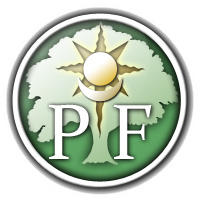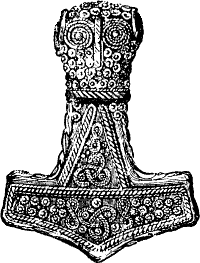
Heathenry is a modern Pagan new religious movement that has been active in the United States since at least the early 1970s. Although the term "Heathenry" is often employed to cover the entire religious movement, different Heathen groups within the United States often prefer the term "Ásatrú" or "Odinism" as self-designations.

Modern paganism, also known as contemporary paganism and neopaganism, is a type of religion or family of religions influenced by the various historical pre-Christian beliefs of pre-modern peoples in Europe and adjacent areas of North Africa and the Near East. Although they share similarities, contemporary pagan movements are diverse and as a result, they do not share a single set of beliefs, practices, or texts. Scholars of religion often characterise these traditions as new religious movements. Some academics who study the phenomenon treat it as a movement that is divided into different religions while others characterize it as a single religion of which different pagan faiths are denominations.
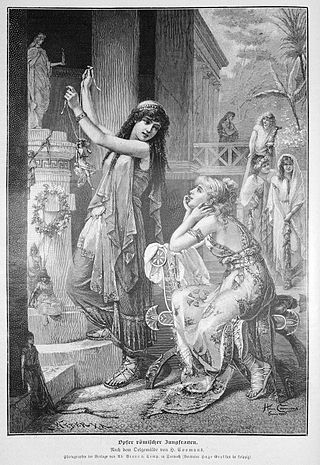
Paganism is a term first used in the fourth century by early Christians for people in the Roman Empire who practiced polytheism, or ethnic religions other than Judaism. In the time of the Roman Empire, individuals fell into the pagan class either because they were increasingly rural and provincial relative to the Christian population, or because they were not milites Christi. Alternative terms used in Christian texts were hellene, gentile, and heathen. Ritual sacrifice was an integral part of ancient Graeco-Roman religion and was regarded as an indication of whether a person was pagan or Christian. Paganism has broadly connoted the "religion of the peasantry".
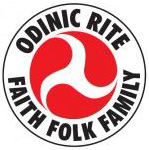
The Odinic Rite (OR) is a reconstructionist religious organisation named after the god Odin. It conceives itself as a "folkish" Heathen movement concerned with Germanic paganism, mythology, folklore, and runes. The Odinic Rite limits membership to individuals of north Western European descents, holding the belief in Heathenry as the ancestral religion of the Indo-European race.
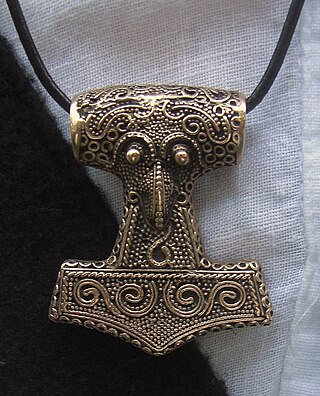
Heathenry, also termed Heathenism, contemporary Germanic Paganism, or Germanic Neopaganism, is a modern Pagan religion. Scholars of religious studies classify it as a new religious movement. Developed in Europe during the early 20th century, its practitioners model it on the pre-Christian religions adhered to by the Germanic peoples of the Iron Age and Early Middle Ages. In an attempt to reconstruct these past belief systems, Heathenry uses surviving historical, archaeological, and folkloric evidence as a basis, although approaches to this material vary considerably.

Celtic neopaganism refers to any type of modern paganism or contemporary pagan movements based on the ancient Celtic religion. One approach is Celtic Reconstructionism (CR), which emphasizes historical accuracy in reviving Celtic traditions. CR practitioners rely on historical sources and archaeology for their rituals and beliefs, including offerings to spirits and deities. Language study and preservation are essential, and daily life often incorporates ritual elements. While distinct from eclectic pagan and neopagan witchcraft traditions, there is some overlap with Neo-druidism.
Modern paganism in the United States is represented by widely different movements and organizations. The largest modern pagan religious movement is Wicca, followed by Neodruidism. Both of these religions or spiritual paths were introduced during the 1950s and 1960s from Great Britain. Germanic Neopaganism and Kemetism appeared in the US in the early 1970s. Hellenic Neopaganism appeared in the 1990s.

Vivianne Crowley is an author, university lecturer, psychologist, and a High Priestess and teacher of the Wiccan religion.

The Modern Pagan movement in the United Kingdom is primarily represented by Wicca and Neopagan witchcraft, Druidry, and Heathenry. 74,631 people in England, Scotland and Wales identified as either as Pagan or a member of a specific Modern Pagan group in the 2021 UK Census.

A nature religion is a religious movement that believes nature and the natural world is an embodiment of divinity, sacredness or spiritual power. Nature religions include indigenous religions practiced in various parts of the world by cultures who consider the environment to be imbued with spirits and other sacred entities. It also includes modern Pagan faiths, which are primarily concentrated in Europe and North America.

Druidry, sometimes termed Druidism, is a modern spiritual or religious movement that promotes the cultivation of honorable relationships with the physical landscapes, flora, fauna, and diverse peoples of the world, as well as with nature deities, and spirits of nature and place. Theological beliefs among modern Druids are diverse; however, all modern Druids venerate the divine essence of nature.

A Community of Witches: Contemporary Neo-Paganism and Witchcraft in the United States is a sociological study of the Wiccan and wider Pagan community in the Northeastern United States. It was written by American sociologist Helen A. Berger of the West Chester University of Pennsylvania and first published in 1999 by the University of South Carolina Press. It was released as a part of a series of academic books entitled Studies in Comparative Religion, edited by Frederick M. Denny, a religious studies scholar at the University of Chicago.
Pagan studies is the multidisciplinary academic field devoted to the study of modern paganism, a broad assortment of modern religious movements, which are typically influenced by or claiming to be derived from the various pagan beliefs of premodern Europe. Pagan studies embrace a variety of different scholarly approaches to studying such religions, drawing from history, sociology, anthropology, archaeology, folkloristics, theology and other religious studies.

Pagan Theology: Paganism as a World Religion is a taxonomical study of various world religions which argues for a new definition of the word "paganism". It was written by American religious studies scholar Michael York of Bath Spa University and first published by New York University Press in 2003.

Neopaganism in South Africa is primarily represented by the traditions of Wicca, Neopagan witchcraft, Germanic neopaganism and Neo-Druidism. The movement is related to comparable trends in the United States and Western Europe and is mostly practiced by White South Africans of urban background; it is to be distinguished from folk healing and mythology in local Bantu culture.

The Erzyan native religion, also called Erzyan neopaganism, is the modern revival of the ethnic religion of the Erzya Mordvins, peoples of Volga Finnic ethnic stock dwelling in the republic of Mordovia within Russia, or in bordering lands of Russia. The name of the originating god according to the Erzya tradition is Ineshkipaz.
Heathenry in the United Kingdom consists of a variety of modern pagan movements attempting to revive pre-Christian Germanic religiosities, such as that practised in the British Isles by Anglo-Saxon and Nordic peoples prior to Christianisation.
TheScottish Pagan Federation (SPF) is a Scotland-based organisation which works to support the Neopagan community in Scotland. Originally part of the Pagan Federation, it became an independent organisation in 2006. The group seeks to promote tolerance of Neopaganism, spread information to the public, interface with other religions through interfaith activities, defend Neopagans from religious discrimination, and provide a network for Scottish Neopagans. They have been members of Interfaith Scotland since 2013. They run an annual conference which brings together Neopagans from across the country as well as an annual summer camp. In 2021 they announced the release of an official tartan intended for the use of Neopagans worldwide.

Modern paganism and New Age are eclectic new religious movements with similar decentralised structures but differences in their views of history, nature, and goals of the practitioner. Modern pagan movements, which often have roots in 18th- and 19th-century cultural movements, seek to revive or be influenced by historical pagan beliefs. New Age teachings emerged in the second half of the 20th century and are characterised by millenarian ideas about spiritual advancement. Since the counterculture of the 1960s, there has been interaction, mutual influence, and often confusion in the popular mind between the movements.
Modern paganism, also known as contemporary paganism and neopaganism, is a collective term for new religious movements which are influenced by or derived from the various historical pagan beliefs of pre-modern peoples. Although they share similarities, contemporary pagan religious movements are diverse, and as a result, they do not share a single set of beliefs, practices, or texts.
